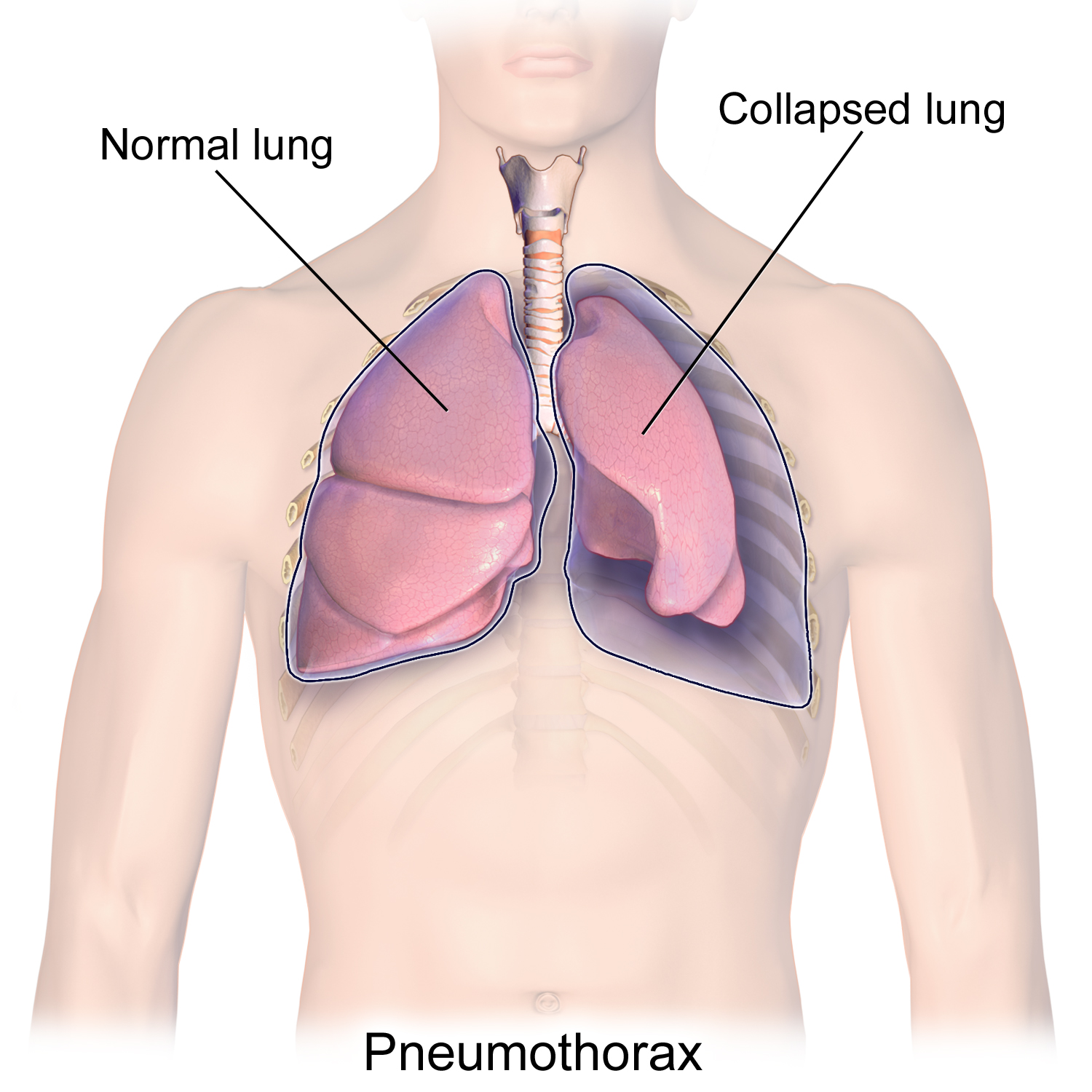Page Contents
OVERVIEW
This page is dedicated to covering how the condition pneumothorax will appear on different types of radiological imaging studies.
BASIC CHARACTERISTICS
Fundamentally, pneumothorax refers to the presence of air in the thoracic cavity. This will cause the collapse of the lung parenchyma WITH the qualifier that the visceral and parietal pleura are separated by free air. This is different from other types of lung collapse such as atelectasis (where the parietal and visceral pleura, remain intact).

The severity of the pneumothorax may vary depending on how much air is trapped in the thorax: It is for this reason that the type of pneumothorax may be specified.
- Tension pneumothorax: patients who have signs of severe hyperinflation (such as the shifting of mediastinal structures AWAY from the affected side) are said to have to radiologically have a “tension pneumothorax”. It is important to keep in mind that some physicians prefer to reserve this moniker for patients who are clinically symptomatic, as the presence of radiologically evidence of a tension pneumothorax does not always correlate with clinical presentation.
- Non-tension pneumothorax: this refers to every other type of pneumothorax that does not cause any radiological signs of tension.
Here are some general features of pneumothorax:
- Loss of lung markings: because of the collapse of lung tissue (combined with the introduction of air) there will be the loss of traditional lung markings across radiological studies when evaluating a pneumothorax.
- Hyperinflation of thoracic cavity: becasue a pneumothorax is caused by free air in the thoracic cavity, there may be signs of hyperinflation on the affected side of the patient.
Radiological features of a tension pneumothorax:
- Mediastinal shift AWAY from pneumothorax: the heart/trachea/other structures can be pushed away from the side of the pneumothorax.
- Flattening of diaphragms on the side of the pneumothorax:
DIFFERENTIAL DIAGNOSIS FOR THIS FINDING
When seeing a pneumothorax, it is important too keep in mind the following possible causes of this finding:
- Rupture of the trachea: this can be caused by a traumatic intubation
CHEST X-RAY
A chest X-ray can be a very common study by which a pneumothorax will be diagnosed. Make sure to review how to read chest X-rays, as well as the archive of unremarkable chest X-rays as a reference point.
Some key features to keep in mind for the appearance of pneumothorax on a chest X-ray are listed below: it is important to keep in mind that an expiatory chest X-ray is more sensitive for detecting a pneumothorax because it will cause increased lung density and decreased thoracic volume.
- Loss of lung markings: because of the collapse of lung tissue (combined with the introduction of air) there will be the loss of traditional lung markings across radiological studies when evaluating a pneumothorax.
- Hyperinflation of thoracic cavity: becasue a pneumothorax is caused by free air in the thoracic cavity, there may be signs of hyperinflation on the affected side of the patient. Most notably there may be flattened diaphragms, as well as the deep sulcus sign.
- Visible visceral pleura: the visceral pleura will be visible as a thin white line that will mark the border of the lung tissue.
NON-TENSION PNEUMOTHORAX
The archive below organizes different examples of a non-tension pneumothorax. It will be the absence of shifting mediastinal structures that help identify this SPECIFIC subtype of pneumothorax. Click on the thumbnails below to view the archive.
TENSION PNEUMOTHORAX
The archive below organizes different examples of a tension pneumothorax. It will be the presence of shifting mediastinal structures that help identify this SPECIFIC subtype of pneumothorax. Click on the thumbnails below to view the archive.
COMPUTIRIZED TOMOGRAPHY (CT-SCAN)
MAGNETIC REASONANCE IMAGING (MRI)
Page Updated: 10.12.2016